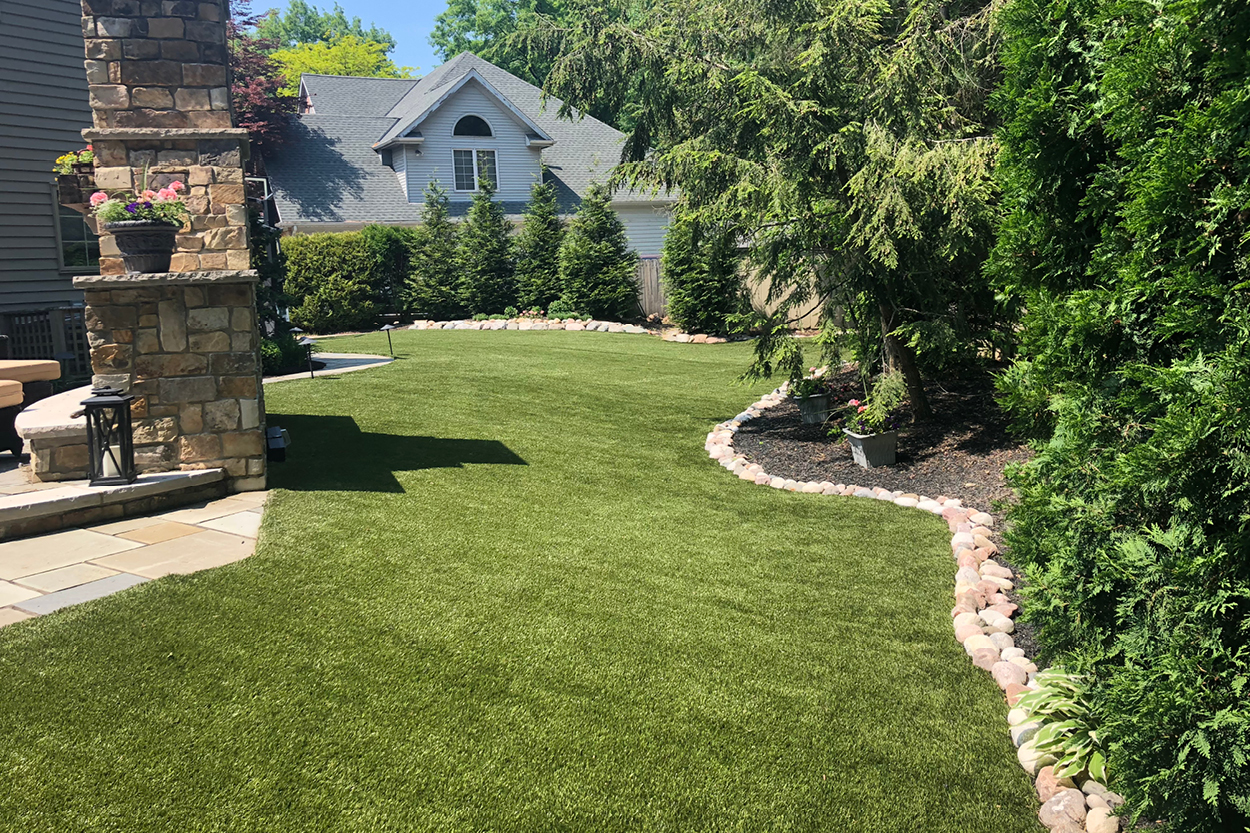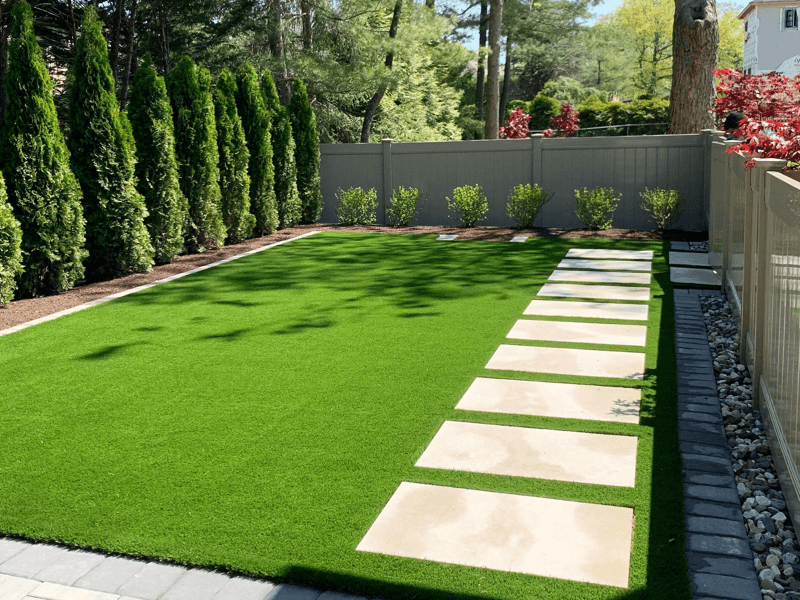Long-Lasting Arizona Artificial Turf for Home and Business Applications
Long-Lasting Arizona Artificial Turf for Home and Business Applications
Blog Article
Look Into the Environmental Perks of Opting for Synthetic Grass Solutions
The adoption of synthetic grass solutions presents a compelling opportunity to deal with pushing ecological challenges. By dramatically lowering water use and minimizing the application of dangerous chemicals, these choices not just advertise lasting landscape design however additionally secure regional ecological communities. Moreover, the reduced carbon footprint connected with reduced upkeep tasks adds to a much more sustainable method to land administration. However, the ramifications of these advantages prolong beyond plain preservation efforts, elevating concerns about their lasting influence on habitat conservation and overall ecological balance. Discovering these dimensions exposes a complex interaction worth thinking about.
Water Conservation Conveniences
One of the most substantial benefits of synthetic grass is its ability to save water. Traditional grass lawns need considerable irrigation, specifically in locations vulnerable to dry spell or water restrictions. On the other hand, fabricated lawn does not need watering, considerably reducing the overall demand for water sources. This attribute is specifically beneficial in arid regions where water scarcity is a pressing concern.
By removing the demand for routine watering, artificial grass adds to sustainable landscape techniques and helps alleviate the ecological effect of too much water consumption. Additionally, the preservation of water reaches the decrease of drainage, which can lead to soil disintegration and river pollution.
Furthermore, the setup of synthetic grass permits property owners and communities to allot water resources much more effectively, concentrating on essential uses such as alcohol consumption water and farming. The shift towards synthetic grass not only promotes liable water use yet additionally aligns with broader environmental goals targeted at preserving all-natural sources.
As communities increasingly prioritize sustainability, the water preservation benefits of fabricated lawn offer an engaging case for its adoption in domestic and industrial landscape design tasks.
Lowered Chemical Use
The transition to synthetic grass considerably lowers the reliance on chemical treatments frequently utilized in natural lawn maintenance. Standard turf monitoring typically involves the application of plant foods, herbicides, and chemicals to advertise development and control pests. These chemicals can posture dangers to human health and wellness, neighborhood wild animals, and the setting, adding to dirt and water contamination.
In contrast, man-made lawn removes the demand for these harmful compounds. By lessening the launch of artificial compounds into the community, artificial turf advertises much healthier dirt and water systems.
Moreover, the lack of chemical runoff connected with synthetic grass installments helps safeguard regional rivers from air pollution, supporting marine life and keeping biodiversity. Arizona artificial turf. As communities increasingly focus on lasting practices, going with man-made grass presents a sensible solution that aligns with ecological conservation objectives. Via this shift, residential property proprietors can enjoy lush eco-friendly rooms without compromising environmental health, paving the method for a more sustainable future
Reduced Carbon Impact

Moreover, the installment of artificial grass can cause significant water conservation. All-natural lawns call for substantial amounts of water for irrigation, which not only contributes to the carbon footprint connected with water extraction and therapy yet likewise strains regional water sources. In comparison, synthetic grass needs very little upkeep, needing no watering, consequently significantly reducing water usage and its linked energy costs.
Additionally, the durability of synthetic turf adds to its reduced carbon impact. With a life expectancy of as much as 15 years or even more, the demand for constant replacements is diminished, causing much less waste and lower power consumption in production and dealing with typical yard options. Generally, synthetic lawn provides a lasting choice for environmentally mindful landscape design.
Environment Conservation
Habitat preservation is an important consideration in the argument over landscape design selections, particularly when comparing synthetic grass to natural lawn. Natural yard yards often need extensive maintenance, including making use of herbicides, pesticides, and fertilizers, which can detrimentally impact local environments. These chemicals can leach into the dirt and waterways, hurting native flora and fauna and interfering with local environments.
On the other hand, synthetic grass provides an opportunity to reduce the eco-friendly footprint of landscape design. By choosing for synthetic turf, homeowners can minimize the disturbance of natural habitats connected with standard lawn treatment practices. Synthetic grass removes the need for damaging chemicals, therefore securing neighboring wildlife and preserving the honesty of surrounding communities. The setup of artificial lawn can lead to the conversion of former lawn locations into more biodiverse landscapes, such as pollinator gardens or native plant locations, which can sustain neighborhood wildlife.
Inevitably, the shift to synthetic grass not only conserves water and minimizes upkeep efforts however also promotes Related Site a more harmonious partnership in between human tasks and the natural surroundings, promoting habitat preservation while doing so.
Long-Term Sustainability
Lasting sustainability is an essential consider examining the advantages of synthetic grass over standard yard yards. One of one of the most considerable benefits of synthetic grass is its durability; it imp source can last approximately 15-20 years with minimal upkeep, whereas natural yard needs regular reseeding and replacement. This long life decreases the demand for continuous resources, such as water, plant foods, and pesticides, which are necessary for preserving a healthy and balanced yard lawn.
Additionally, synthetic grass adds to a reduction in carbon exhausts associated with grass care tools. Standard lawns usually call for gas-powered lawn mowers, leaners, and blowers, every one of which add to air pollution. Arizona artificial turf. In contrast, synthetic grass removes the demand for such tools, advertising a cleaner atmosphere
In addition, the manufacturing of synthetic grass significantly utilizes recycled materials, improving its sustainability account. As manufacturers adopt eco-friendly methods, the ecological footprint of fabricated lawn continues to diminish.

Final Thought
The adoption of synthetic grass services provides significant ecological advantages, including substantial water preservation, decreased reliance on unsafe chemicals, and a reduced carbon footprint. In addition, synthetic grass help in preserving natural habitats by minimizing land disruption and promoting long-lasting sustainability with making use of sturdy materials. Jointly, these variables Get More Info emphasize the capacity of synthetic grass to add positively to ecological health and offer a feasible choice to standard landscaping techniques in a significantly resource-conscious globe.
In comparison, artificial lawn does not require watering, dramatically reducing the total demand for water sources. By reducing the launch of synthetic substances into the ecosystem, fabricated lawn promotes healthier soil and water systems.
Moreover, the installment of fabricated turf can result in considerable water preservation. In comparison, fabricated lawn needs marginal maintenance, calling for no watering, thus considerably decreasing water use and its associated power costs.

Report this page